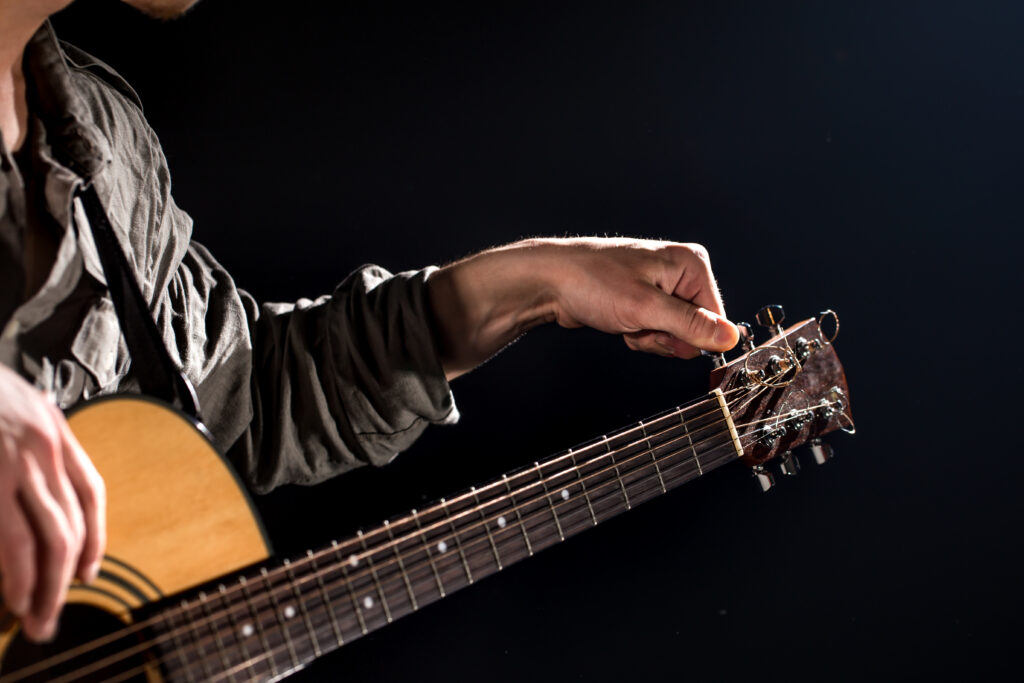How to Play Fingerstyle Guitar Like a Pro
What Is Fingerstyle Guitar?
Fingerstyle guitar is a method of playing the guitar where you use your fingers—rather than a pick—to pluck the strings. It allows for greater complexity and nuance than pick-based techniques, enabling players to simultaneously play bass lines, chords, and melodies. This self-sufficiency means fingerstyle guitarists can sound like a full ensemble, even when performing solo.
This technique is used across many genres, from classical and jazz to folk, blues, and modern acoustic. It’s particularly favored by solo performers and songwriters who seek a rich, layered sound. Mastery of fingerstyle guitar requires coordination, rhythm, and finesse but opens up a world of creative possibilities.
Fingerstyle vs. Flatpicking
Flatpicking uses a plectrum to strike the strings, generally one note or strum at a time. It’s common in bluegrass, rock, and lead guitar styles. Fingerstyle, by contrast, allows you to:
Independently control multiple voices (bass, chords, melody)
Vary tone and dynamics more naturally
Add percussive elements and harmonic complexity
While flatpicking excels in speed and precision for lead lines, fingerstyle gives you an orchestral palette to work with. Both techniques are valuable, and many advanced players learn to integrate both into their playing.
Anatomy of the Right Hand | Finger Names and Roles

Understanding the role of each finger in fingerstyle is essential. The classical system uses the following names:
P (Pulgar): The thumb, responsible for playing the bass strings (6th, 5th, and 4th strings).
I (Indice): The index finger, commonly assigned to the 3rd string (G).
M (Medio): The middle finger, which often plucks the 2nd string (B).
A (Anular): The ring finger, responsible for the 1st string (high E).
This naming convention (PIMA) helps create clarity in instruction and notation. Practicing finger rolls (e.g., P-I-M-A) on open strings is a good starting point to train each digit independently and in sequence.
Basic Fingerstyle Techniques
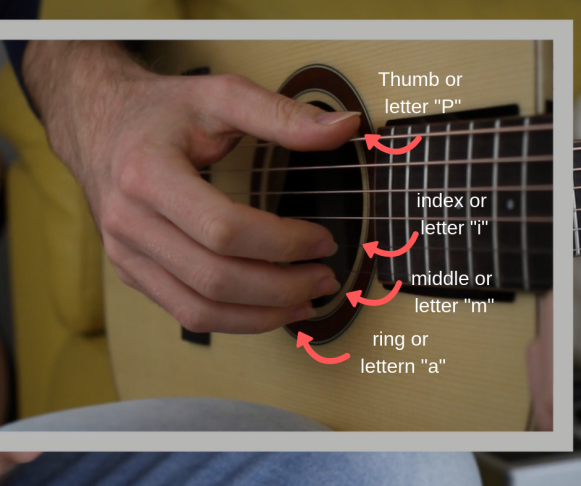
Here are foundational fingerstyle techniques every player should master:
Arpeggios: Break down chords into individual notes and play them in patterns. This improves control and musicality.
Pinch Pluck: Pinch the thumb and another finger together to play a bass and treble string simultaneously. This creates a rhythmic pulse.
Alternating Bass: The thumb alternates between bass strings while the fingers play upper harmonies. This mimics the feel of a bass player in a band.
These techniques should be practiced slowly, with focus on tone, control, and rhythmic accuracy.
Essential Exercises for Building Skill
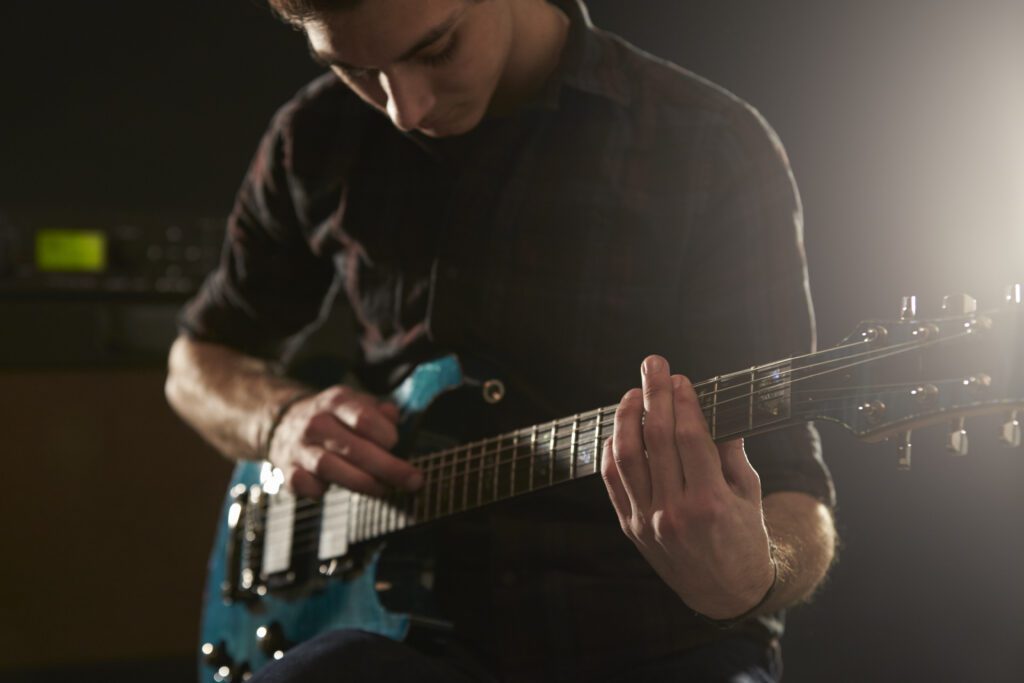
Here are some powerful exercises:
Exercise 1: Basic Arpeggio Pattern
Play a C major chord.
Use the pattern P (A string), I (G string), M (B string), A (high E string), then reverse.
Loop it slowly with a metronome.
Exercise 2: Alternating Bass with Melody
Use your thumb to alternate between the 6th and 5th strings.
While keeping that bass line steady, use your I-M-A fingers to play simple melodies on the top strings.
This is the foundation for folk and country fingerstyle.
Repetition and consistency are crucial. Spend time daily on each exercise to develop muscle memory and control.
Thumb Independence and Bass Lines
The thumb plays a vital role in creating rhythmic and harmonic foundations. It often simulates a bass player in ensemble-style arrangements. Developing thumb independence means:
Practicing steady bass patterns while fingers play varied rhythms.
Keeping the thumb motion relaxed but precise.
Learning to “lock in” the bass rhythm like a drummer.
Start with simple alternating bass patterns and gradually add finger movements. This allows for melodic fingerstyle playing over a stable rhythmic bed.
Travis Picking | A Fingerstyle Staple
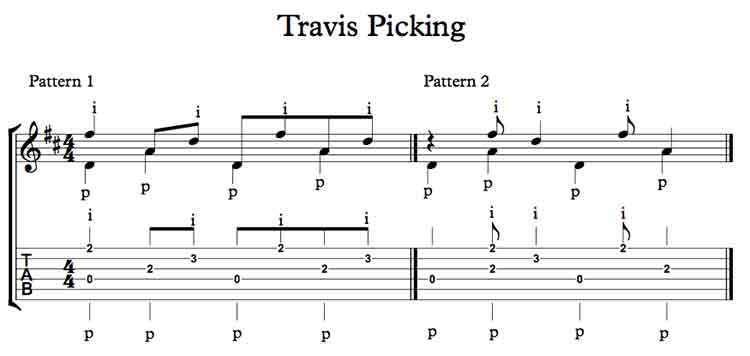
Travis picking is a cornerstone of American folk and country guitar playing. Named after Merle Travis, this technique features:
A steady alternating bass line (usually with the thumb)
Syncopated treble notes (played by index and middle fingers)
An underlying rhythmic groove that mimics stride piano
It’s commonly used in songs by artists like Chet Atkins, Tommy Emmanuel, and James Taylor.
Basic Travis Pattern:
Thumb plays 6th string (beat 1), 4th string (beat 2), and repeats
Index plays 3rd string, middle plays 2nd string between bass beats
This creates a bouncy, rolling rhythm that sounds much harder than it actually is.
Percussive Fingerstyle Techniques
Percussive techniques bring groove and rhythm into fingerstyle playing. They are particularly popular in modern acoustic guitar performance. These include:
Palm Slaps: Lightly slap the guitar body or strings with the palm to simulate snare drum hits.
Body Taps: Tap the sides or top of the guitar to create kick-drum and hi-hat rhythms.
Thumb Slaps: Hit the lower strings with your thumb for a bass drum effect.
Knuckle Raps: Use your knuckles to knock on the body of the guitar for added texture.
Percussive elements add flair and excitement to solo arrangements and are a key part of many viral fingerstyle performances.
Playing with Dynamics and Emotion

One of fingerstyle guitar’s greatest strengths is its capacity for expressive playing. By varying:
Attack (soft vs hard plucking)
Timing (slight rubato, pushing or pulling tempo)
Tone (plucking close to the bridge or neck)
You can imbue your performance with emotion and character. Listen to great fingerstyle players and observe how they tell stories with their touch, dynamics, and phrasing.
Choosing the Right Guitar and Strings
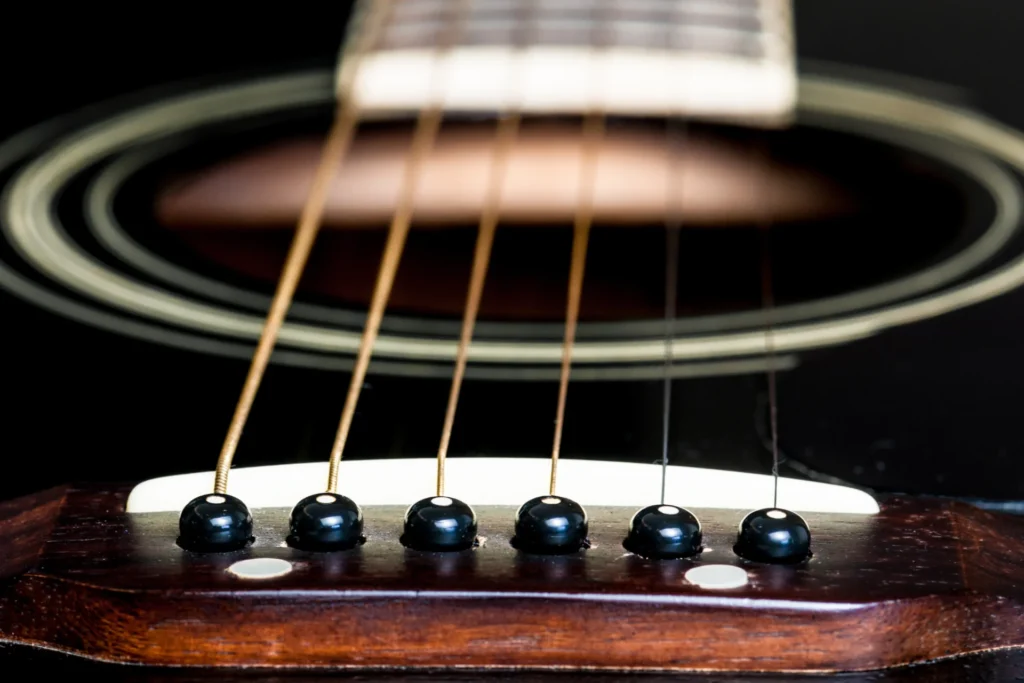
Your guitar should be responsive, comfortable, and suited to fingerstyle playing:
Steel-string acoustics work well for percussive modern styles
Nylon-string guitars are perfect for classical or Latin fingerstyle
Look for:
A wider nut (1.75″+) for more string spacing
Lower action for easier finger movement
Solid wood tops for better resonance
String choice:
Light gauge: easier on fingers, less volume
Medium gauge: balanced tone and feel
Coated strings: long-lasting, great for live performance
Nails or No Nails?
Whether to use nails is a matter of personal preference:
Nails produce a brighter, more articulate tone and work well in fast or intricate passages.
No nails (flesh only) gives a warmer, softer tone that’s preferred in some genres.
Many players file and polish their nails into a specific shape for consistency. Others use fingerpicks for volume and projection.
Using a Thumb Pick
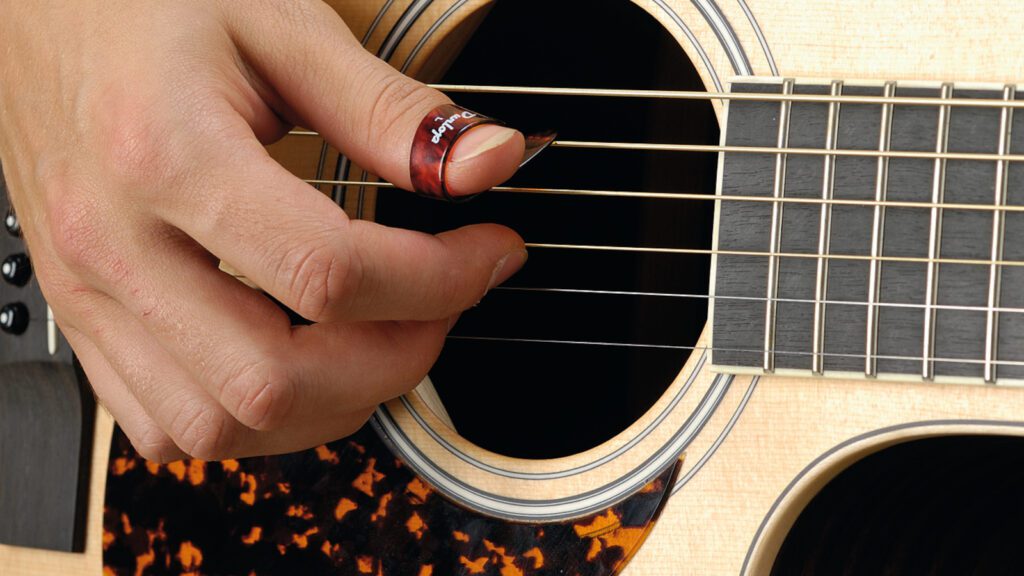
A thumb pick gives extra power and consistency to your bass notes. It’s essential for many traditional styles, especially:
Country blues
Travis picking
Ragtime
Thumb picks can be tricky at first, but they help in boosting thumb tone and volume. Start slow and alternate between bare thumb and thumb pick to build comfort.
How to Practice Effectively
Smart practice = faster results. Tips include:
Always warm up your fingers
Use a metronome religiously
Set short, focused goals (e.g., “master measure 3”)
Record and critique your playing
Practice slowly and deliberately to eliminate mistakes. Focus on tone, timing, and clarity.
Popular Fingerstyle Songs to Learn
Learning songs is one of the best ways to improve. Try these:
“Blackbird” by The Beatles: Great for finger independence
“Dust in the Wind” by Kansas: Excellent Travis picking practice
“Tears in Heaven” by Eric Clapton: Emotional, melodic playing
“Drifting” by Andy McKee: Percussive and rhythmic
“Classical Gas” by Mason Williams: Great for dexterity and tone
Each of these tunes teaches something different and will challenge your technique.
Advanced Techniques | Harmonics, Tapping, and Slapping
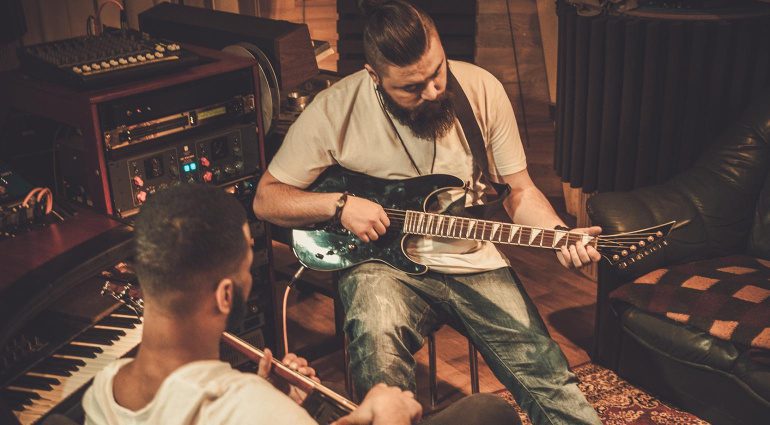
Once you’ve mastered the basics, explore these:
Harmonics: Touch strings lightly at frets 5, 7, or 12 for bell-like tones
Tapping: Use fretting hand and plucking hand fingers to tap melodies directly on the fretboard
Slapping: Hit the strings or body for groove-based playing
These techniques are hallmarks of players like Michael Hedges and Andy McKee.
How to Arrange Songs for Fingerstyle
Want to turn a pop or rock song into a fingerstyle masterpiece? Here’s how:
Identify melody, bass line, and chords
Place the melody on the high strings
Add bass notes under the melody
Fill in harmony using middle strings
Recording Your Fingerstyle Playing
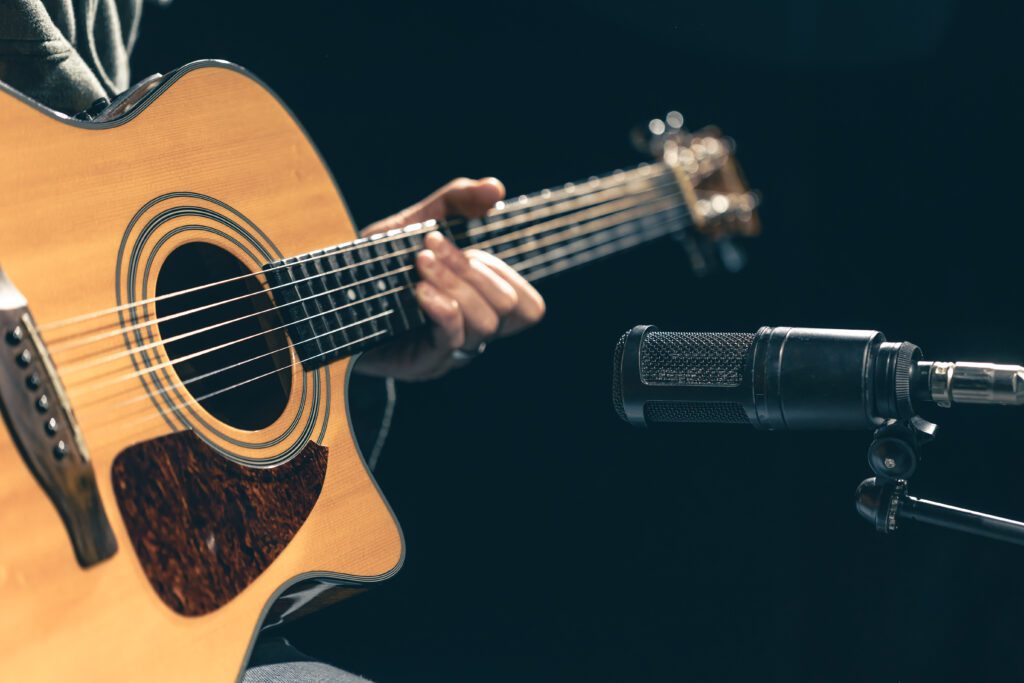
Capturing your performance is important for feedback and sharing. Tips:
Use a high-quality condenser mic
Mic near the 12th fret (plus one near bridge if stereo)
Use noise reduction and EQ in post-processing
Try DAWs like Reaper, Logic Pro, or Audacity
A well-recorded performance lets your fingerstyle tone shine.
Fingerstyle Guitarists to Study
Studying great players accelerates your progress. Start with:
Tommy Emmanuel – Precision, groove, and percussive flair
Chet Atkins – Smooth Travis picking and melody
Sungha Jung – Melodic arrangements of pop hits
Andy McKee – Percussive and emotional playing
Gabriella Quevedo – Fluid fingerstyle arrangements
Michael Hedges – Experimental techniques and textures
Watch their videos, transcribe their music, and mimic their phrasing.
Common Mistakes and How to Avoid Them
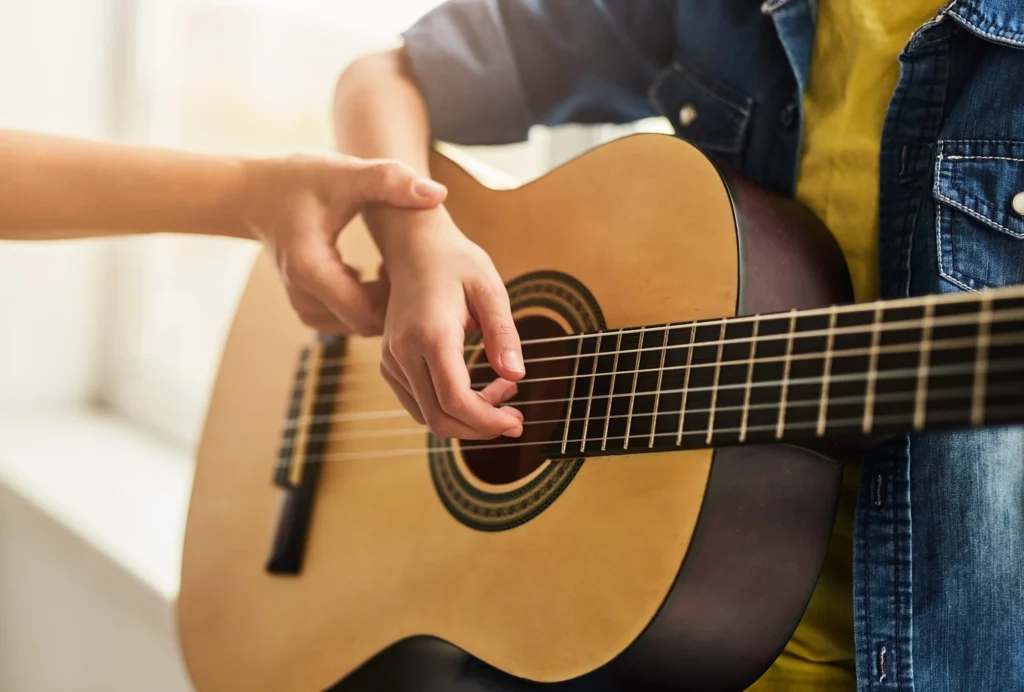
Avoid these traps:
Tension: Relax your shoulders, arms, and hands
Speeding up too soon: Master slow tempos before increasing
Unclear tone: Work on plucking technique and volume control
Neglecting the thumb: Your thumb is your bass and your drummer—train it!
Fixing mistakes early helps build solid foundations.
Final Thoughts and Next Steps
Fingerstyle guitar is one of the most rewarding ways to play. Whether you’re playing a simple folk tune or arranging a complex jazz standard, the technique gives you immense control and expression. Be patient, enjoy the process, and celebrate each breakthrough.
Keep exploring, keep listening, and above all, keep playing.
Ready to master the strings? Enroll in our Guitar Lessons Online and start learning from expert instructors, right from home.
Related Blogs
The most common question that might arise in the minds of those starting their electric guitar is journey is – How long does it take to master electric guitar?


